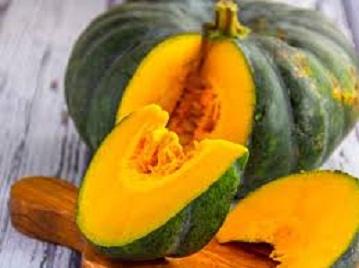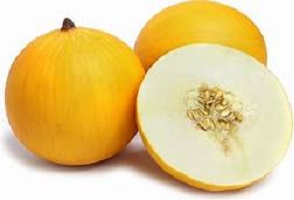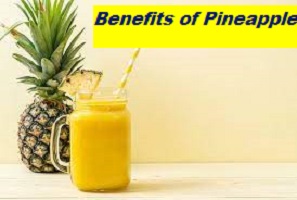Pumpkins: Meaning, Health Benefits, and Nutritional Breakdown
Pumpkins are native to North America and particularly popular around Thanksgiving and Halloween
What Is A Pumpkin?
Pumpkins are part of the squash family that belongs to the Cucurbitaceae family.
They are usually large, round and vibrant deep yellow to orange with a slightly ribbed, tough and smooth outer skin.
Inside the pumpkin are the seeds and flesh. When cooked, the whole pumpkin is edible – the skin, pulp, and seeds – you just need to remove the stringy bits which hold the seeds in place.
When You Think About Pumpkins, What Comes To Mind?
Jack-o’-lanterns? Pumpkin pie? Charlie Brown? Pumpkin spice lattes?
Well, there’s more to these orange gourds than traditional Halloween decoration, carving ideas or a Thanksgiving pie filling desserts and drinks.
Pumpkin is a plump, nutritious orange vegetable, and a highly nutrient dense-food.
They are usually harvested during mid-fall with a sharp knife to cut the pumpkin from the vine, leaving about 2 inches of stem.
It is low in calories but rich in vitamins and minerals, all of which are also in its seeds, pulp, leaves, and juices.
However, the flesh of the pumpkin plant provides a range of health benefits outside of popular festivities.
While usually regarded as a vegetable, pumpkin is scientifically a fruit, as it contains seeds.
That said, it’s nutritionally more similar to vegetables than fruits.
Beyond its delicious taste, pumpkin is nutritious and linked to many health benefits.
Nutritional benefits of pumpkin
- Firstly, pumpkins are one of the most nutritious fruits out there.
- Secondly, they are full of antioxidants and disease-fighting vitamins, these gourds aren’t just for carving — they’re a bona fide super-food.
- The real star is the seeds. Pumpkins seeds are nutrient powerhouses.
- One ounce (about 140 seeds) is packed with protein, magnesium, potassium, and zinc.
- Additionally, the seeds contain high levels of phytosterols, which research suggests can reduce cholesterol and even help prevent some types of cancer.
Other Benefits Include:
- Boost immunity
Both pumpkin flesh and seeds are high in vitamin C and antioxidants, including beta-carotene and other carotenoids.
- Cleanse the liver
Beta-carotene and other carotenoids in pumpkins improve the tissue health of the liver and also help detoxify the liver.
- Healthy eyes
In addition to their immune benefits, beta-carotene and the other carotenoids, including lutein, are important for eye health.
- Weight loss
Pumpkin is packed with fiber, helping you feel fuller and more satisfied for longer. Fiber is associated with weight loss, too.
- Healthy skin
Eating pumpkin can help improve the appearance and texture of your skin.
- Heart-healthy choice
The potassium in pumpkins can have a positive effect on blood pressure.
- Can prevent cancer
Pumpkins are packed with antioxidants, and eating them often may help reduce the risk of many types of cancer.
- Can help treat type 2 diabetes and lower blood sugar
Eating pumpkin can have a variety of beneficial effects for diabetics — and for lowering blood sugar.
- Reduce inflammation and the risk of arthritis
Regular intake of the carotenoid beta-cryptoxanthin, which is found in pumpkin, can cool unwanted inflammation.
Nutrition
According to the United States Department of Agriculture’s Food Data Central database, 1 cup or 245 grams (g) of cooked, boiled, or drained pumpkin, without salt, contains:
- 76 g of protein
- 7 g of fiber
- 17 g of fat
- 49 calories (kcal)
- 0 g of cholesterol
- 12 g of carbs
Recipe: How to Make Homemade Pumpkin Puree
Making homemade pumpkin puree from scratch is very easy.
Simply, skip the canned stuff and cash in on this made-from-scratch recipe.
There are three easy ways to make pumpkin puree ahead of time –
- Baking
- Boiling
- Steaming
You can freeze until you’re ready to whip up
Easy Pumpkin Puree from Scratch
This is a simple method for preparing pureed pumpkin, store the leftover in the freezer for later use in pies, muffins, etc.
Method
- Firstly, preheat oven to 325 degrees F (165 degrees C).
- Secondly, cut the pumpkin in half, stem to base. Remove seeds and pulp and cover each half with foil.
- Thirdly, bake in the preheated oven, foil side up, 1 hour, or until tender.
- After that, scrape pumpkin meat from shell halves and puree in a blender.
- Lastly, strain to remove any remaining stringy pieces and store in the freezer in freezer-safe bags.
Side Effects
- Even though there’s no such thing as too much pumpkin, eating a lot can give your skin discoloration,
- Too much beta carotene isn’t toxic, but excessive consumption can cause a yellowish discoloration of the skin called carotenemia
- Lastly, the skin discoloration is harmless and can be easily reversed.




Pingback: Pumpkin smoothie Recipe: Healthy and Nutritious - 9jafoods
Pingback: Pumpkin Leaf: 15 Facts, History, Health Benefits, and Side Effects - 9jafoods